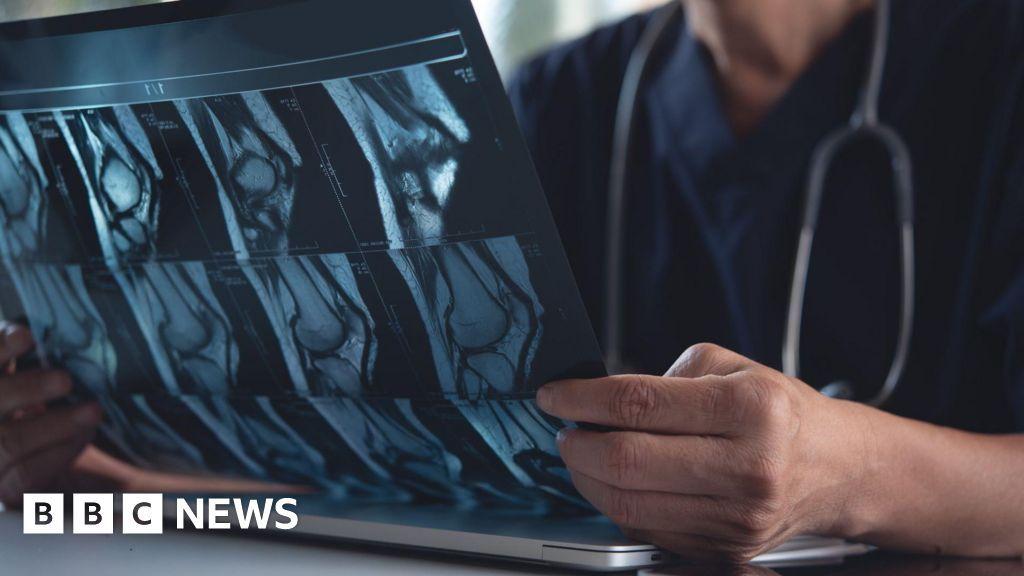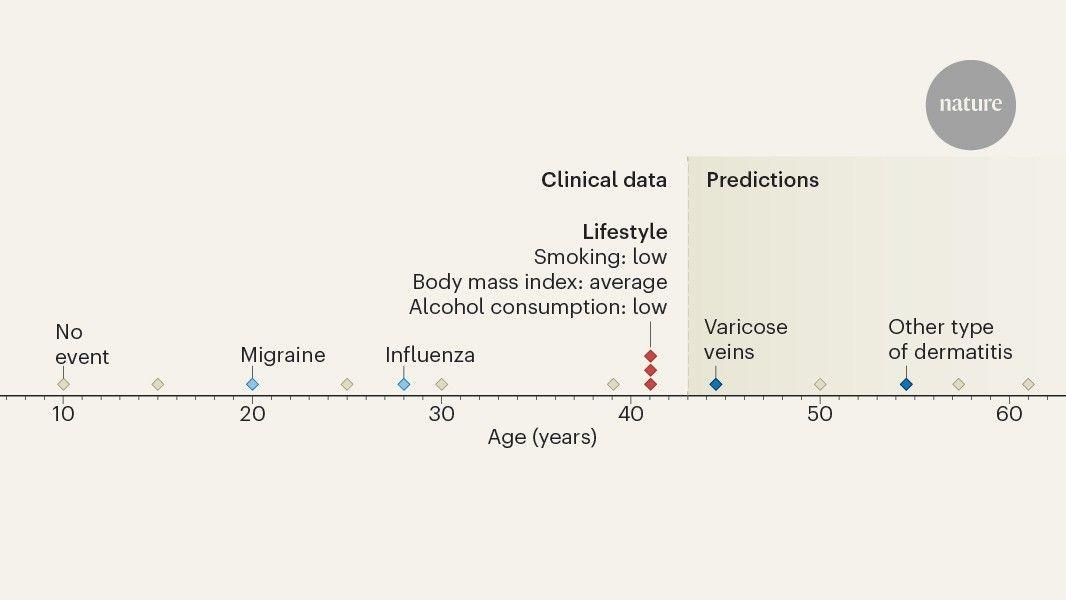AI Breakthrough: Predicting Future Knee X-rays Revolutionizes Osteoarthritis Care
2 Sources
2 Sources
[1]
X-ray predicting AI could transform care, Surrey study finds
An Artificial Intelligence (AI) system that can predict what a knee X-ray will look like in the future could transform how millions of patients with osteoarthritis are treated, researchers have said. Researchers at the University of Surrey said the developed technology used machine learning to visualise what the knee will look like in a year's time and score its disease risk. Osteoarthritis is a degenerative joint disease affecting more than 500 million people worldwide, according to the university. Prof Gustavo Carneiro said it would help clinicians identify high-risk patients sooner and personalise their care "in ways that were not previously practical".
[2]
AI predicts future X-rays to help osteoarthritis patients and their doctors see what's coming
An AI system that can predict what a patient's knee X-ray will look like a year in the future could transform how millions of people with osteoarthritis understand and manage their condition, according to research by the University of Surrey. A new study, presented at the International Conference on Medical Image Computing and Computer Assisted Intervention (MICCAI 2025), details how the Surrey-developed technology uses advanced machine learning to generate a realistic "future" X-ray alongside a risk score for disease progression in the knee. These two outputs combined can give doctors and patients a clear, visual forecast of how the condition may develop over time. The paper is available on the arXiv preprint server. Osteoarthritis is a degenerative joint disease that affects more than 500 million people worldwide and is the leading cause of disability in older adults. Trained on nearly 50,000 knee X-rays from almost 5,000 patients -- one of the largest osteoarthritis datasets in the world -- the system outperforms comparable AI tools for predicting osteoarthritis progression, doing so around nine times faster and in a much more compact form. Researchers say this blend of speed, scale and accuracy could accelerate adoption in real clinical settings. David Butler, study lead from the University of Surrey's Center for Vision, Speech and Signal Processing (CVSSP), and Institute for People-Centered AI, said, "We're used to medical AI tools that give a number or a prediction, but not much explanation. Our system not only predicts the likelihood of your knee getting worse -- it actually shows you a realistic image of what that future knee could look like. "Seeing the two X-rays side by side -- one from today and one for next year -- is a powerful motivator. It helps doctors act sooner and gives patients a clearer picture of why sticking to their treatment plan or making lifestyle changes really matters. We think this can be a turning point in how we communicate risk and improve osteoarthritic knee care and other related conditions." Using an advanced generative model, called a diffusion model, the Surrey system generates a "future" version of a patient's knee X-ray and highlights 16 key points in the joint. These points add transparency by showing which areas the AI is monitoring for changes, making the system easier for clinicians to understand and trust. In the future, this research could pave the way for similar tools in other chronic conditions, for example, predicting lung damage in smokers or tracking heart disease progression, giving doctors and patients the same kind of visual insight and opportunity to act early. The team is also seeking partnerships to bring the technology into real-world clinical settings. Gustavo Carneiro, Professor of AI and Machine Learning at Surrey's Center for Vision, Speech and Signal Processing (CVSSP), said, "Earlier AI systems could estimate the risk of osteoarthritis progression, but they were often slow, opaque and limited to numbers rather than clear images. "Our approach takes a big step forward by generating realistic future X-rays quickly and by pinpointing the areas of the joint most likely to change. That extra visibility helps clinicians identify high-risk patients sooner and personalize their care in ways that were not previously practical."
Share
Share
Copy Link
Researchers at the University of Surrey have developed an AI system that can predict future knee X-rays for osteoarthritis patients, potentially transforming treatment approaches and patient care for millions worldwide.

Groundbreaking AI Technology for Osteoarthritis Prediction
Researchers at the University of Surrey have developed a revolutionary Artificial Intelligence (AI) system that could transform the treatment and care of millions of patients suffering from osteoarthritis worldwide. This innovative technology uses advanced machine learning to predict what a patient's knee X-ray will look like in the future, providing a visual forecast of disease progression
1
.The Power of Predictive Imaging
The AI system generates a realistic 'future' X-ray of a patient's knee, alongside a risk score for disease progression. This dual output provides doctors and patients with a clear, visual representation of how the condition may develop over time. The technology not only predicts the likelihood of knee deterioration but also shows a realistic image of what the future knee could look like .
Advanced Machine Learning and Large-Scale Data
Trained on nearly 50,000 knee X-rays from almost 5,000 patients, the system utilizes one of the largest osteoarthritis datasets in the world. It employs an advanced generative model called a diffusion model to create the future version of a patient's knee X-ray. The AI also highlights 16 key points in the joint, adding transparency and making it easier for clinicians to understand and trust the system's predictions .
Improved Performance and Clinical Potential
According to the researchers, this new AI system outperforms comparable tools for predicting osteoarthritis progression. It operates approximately nine times faster and in a more compact form, potentially accelerating its adoption in real clinical settings. The blend of speed, scale, and accuracy could make this technology a game-changer in the field of osteoarthritis care .
Related Stories
Impact on Patient Care and Treatment
Prof Gustavo Carneiro from the University of Surrey emphasized that this technology would help clinicians identify high-risk patients sooner and personalize their care 'in ways that were not previously practical'
1
. The visual nature of the AI's output serves as a powerful motivator for patients, helping them understand the importance of adhering to treatment plans and making necessary lifestyle changes .Future Applications and Partnerships
The researchers believe that this approach could pave the way for similar tools in other chronic conditions, such as predicting lung damage in smokers or tracking heart disease progression. The team is actively seeking partnerships to bring the technology into real-world clinical settings, which could further revolutionize the way we approach and manage various degenerative diseases .
References
Summarized by
Navi
Related Stories
Recent Highlights
1
AI Chatbots Sway Voters More Effectively Than Traditional Political Ads, New Studies Reveal
Science and Research

2
Trump signs executive order to override state AI laws despite bipartisan pushback
Policy and Regulation

3
OpenAI warns upcoming AI models will likely pose high cybersecurity risk with zero-day exploits
Technology








